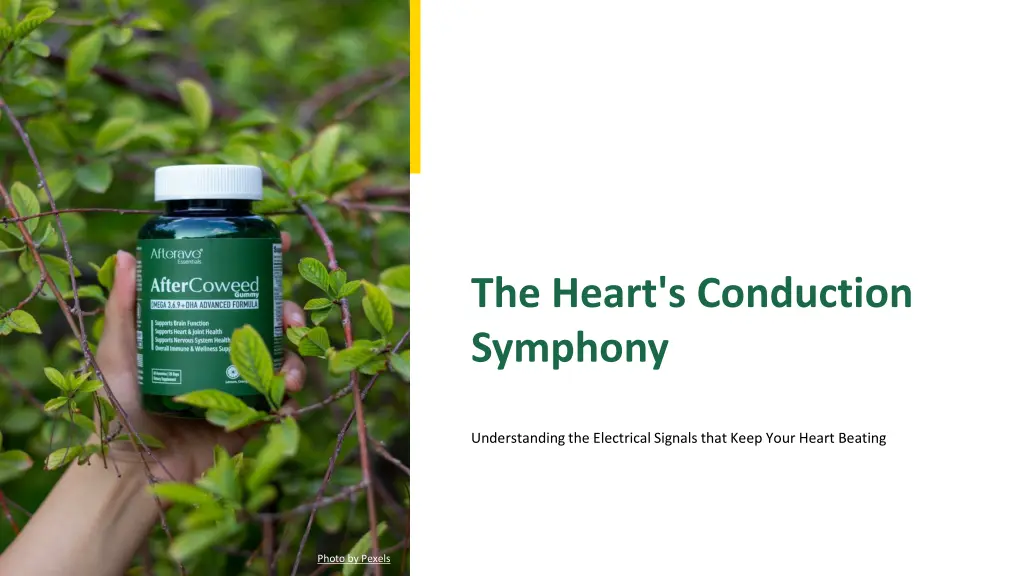
Understanding the Heart's Electrical Conduction System
Explore the intricate network of signals that regulate your heart's rhythm, from the conduction process to common disorders and tips for maintaining a healthy heartbeat. Learn how nodes, cells, and pathways work together in this vital system.
Download Presentation

Please find below an Image/Link to download the presentation.
The content on the website is provided AS IS for your information and personal use only. It may not be sold, licensed, or shared on other websites without obtaining consent from the author. If you encounter any issues during the download, it is possible that the publisher has removed the file from their server.
You are allowed to download the files provided on this website for personal or commercial use, subject to the condition that they are used lawfully. All files are the property of their respective owners.
The content on the website is provided AS IS for your information and personal use only. It may not be sold, licensed, or shared on other websites without obtaining consent from the author.
E N D
Presentation Transcript
The Heart's Conduction Symphony Understanding the Electrical Signals that Keep Your Heart Beating Photo by Pexels
01 Introduction to Heart Conduction Table of Contents 02 Key Components of the Conduction System 03 The Conduction Process 04 Common Disorders 05 Maintaining a Healthy Heartbeat
1 Introduction to Heart Conduction The Heart's Electrical Network Your heart's conduction system is a network of signals that orchestrates each heartbeat. These signals travel through specialized pathways, ensuring your heart contracts and relaxes rhythmically. Key players include nodes and cells that generate and transmit electrical impulses. This system is crucial for maintaining blood flow and overall cardiovascular health. Photo by Pexels
2 Key Components of the Conduction System Nodes, Cells, and Pathways Known as the heart's natural pacemaker, it initiates the electrical impulse. Acts as a gatekeeper, regulating the signal before it reaches the ventricles. Transmits impulses from the atrioventricular node to the ventricles. Distribute the electrical impulse throughout the ventricles, causing contraction. Photo by Pexels
3 The Conduction Process From Signal to Heartbeat The sinoatrial node generates an electrical impulse, starting the heartbeat. The impulse travels through the atria, causing them to contract. The impulse reaches the ventricles, prompting them to contract and pump blood. This process repeats with each heartbeat, ensuring continuous blood flow. Photo by Pexels
4 Common Disorders When the System Falters Irregular heartbeats caused by disruptions in the conduction system. A delay or blockage in the electrical pathway, affecting heart rhythm. Rapid, irregular beating of the atria due to faulty electrical signals. Fast heart rate originating from the ventricles, potentially life- threatening. Photo by Pexels
5 Maintaining a Healthy Heartbeat Tips for Heart Health Routine medical exams can detect conduction issues early. Balanced diet and exercise support cardiovascular health. Reducing stress can prevent disruptions in heart rhythm. Follow prescribed treatments to manage conduction disorders. Photo by Pexels
